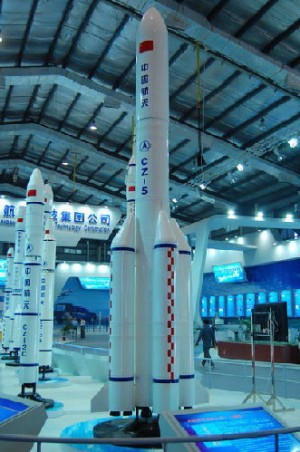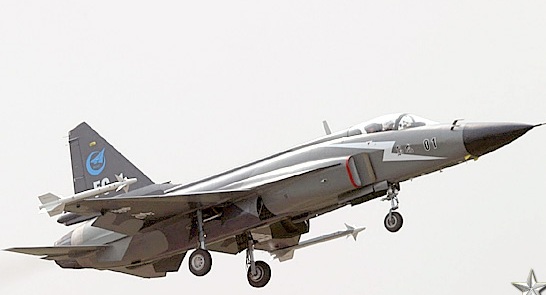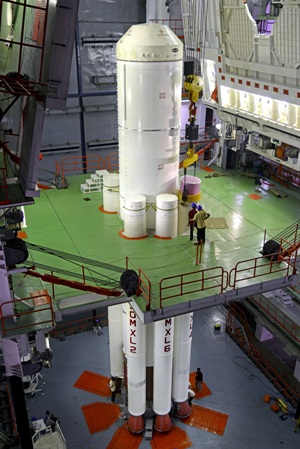
A replica of the new Long March-5 rocket. File photo
BEIJING (PTI): China on Monday successfully completed the second ground test of a power system for its next-generation carrier rocket that will boost its capability to enter space by at least 2.5 times during missions next year.
The test of the Long March-5 was completed ahead of its first flight in 2016, state-run Xinhua news agency reported.
Using non-toxic, non-polluting liquid propellant, the engines were test-fired on the ground to test the technology, said Tan Yonghua, head of the Academy of Aerospace Propulsion Technology.
Long March-5 was first test-fired on February 9 this year.
According to Xu Dazhe, head of the State Administration of Science, Technology and Industry for National Defence, the Long March-5 will increase China's ability to enter the space by at least 2.5 times, largely improving the country's carrier rocket.
The Long March-5 rockets, designed for the final chapter of China's three-step -- orbiting, landing and returning -- lunar programme, will have a payload capacity of 25 tonnes to low Earth orbits, or 14 tonnes to geostationary transfer orbit.
"The Chang'e-5 lunar mission is undergoing intensive development and is scheduled to be launched with a Long March-5 carrier rocket from south China's Hainan Province around 2017," said Xu.
China started work on carrier rockets in the 1950s.
Long March rockets have since become the main carriers for satellites, probes and manned spacecraft.
In December 2014, the CBERS-4 satellite, jointly developed with Brazil, was launched from the Taiyuan base by the Long March-4B rocket, the 200th launch of the Long March rocket family, making China the third country after the US and Russia to complete 200 carrier rocket launches, the report said.
 Previous Article
Previous Article Next Article
Next Article













The Indian Air Force, in its flight trials evaluation report submitted before the Defence Ministry l..
view articleAn insight into the Medium Multi-Role Combat Aircraft competition...
view articleSky enthusiasts can now spot the International Space Station (ISS) commanded by Indian-American astr..
view article